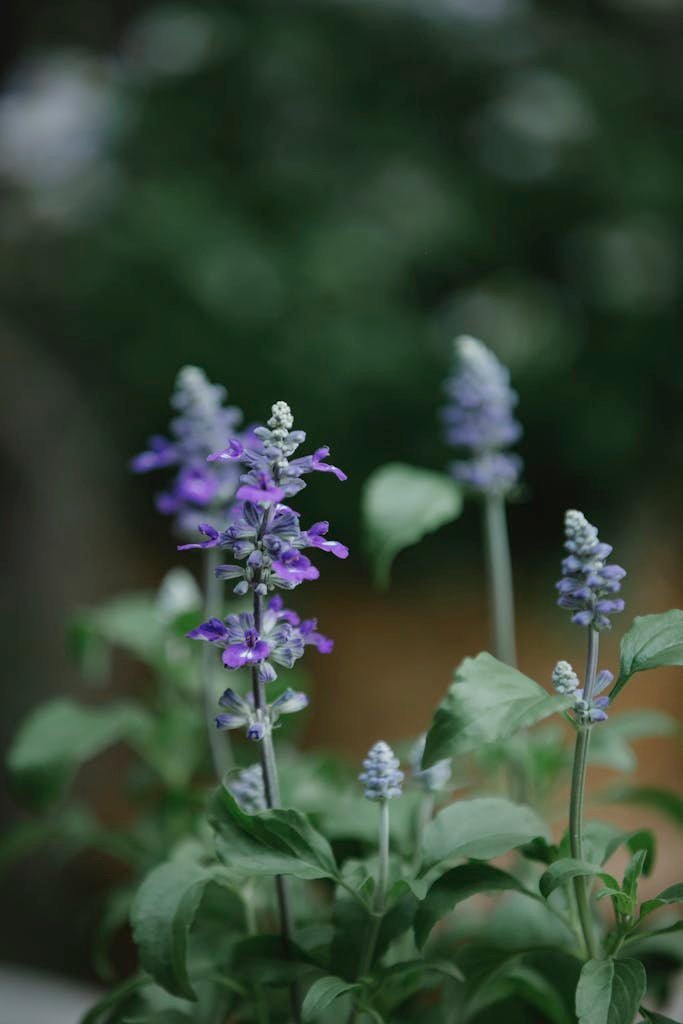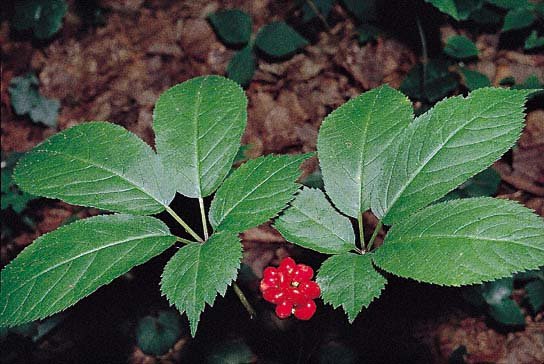Black Cohosh – (Actaea racemosa)
Black Cohosh, known scientifically as Actaea racemosa or Cimicifuga racemosa, has captured the interest of many for its potential health benefits. This perennial plant, native to North America, boasts a rich history of use by Native Americans, who recognized its value in treating a variety of conditions.
Today, Black Cohosh continues to be a topic of interest among those seeking natural remedies. Its uses, particularly in managing menopausal symptoms, have been the focus of numerous studies. As the world leans more towards herbal supplements, understanding the role and efficacy of Black Cohosh is more relevant than ever.
Table of Contents
The History of Black Cohosh
The journey of Black Cohosh from a forest floor in North America to becoming a staple in the herbal supplement cabinet traces back hundreds of years. Native Americans were the first to uncover the potential of Black Cohosh, utilizing it for a variety of purposes ranging from the treatment of snake bites to women’s health issues. This traditional use laid the groundwork for the herb’s modern-day popularity, especially among those seeking natural remedies for menopausal symptoms.
In the 19th century, Black Cohosh caught the attention of European settlers, and its use expanded. It became known in the United States as a common ingredient in “Lydia Pinkham’s Vegetable Compound,” a popular remedy for “female complaints.” This historical endorsement has propelled Black Cohosh into mainstream acceptance, particularly in the realm of natural health solutions.
Recent research supports some of the traditional uses of Black Cohosh, particularly its effectiveness in easing menopausal symptoms such as hot flashes, mood disturbances, and sleep problems. Studies published in journals like Menopause and The Journal of Agricultural and Food Chemistry have provided scientific backing for these claims, although they also highlight the need for further research to fully understand the mechanisms at play.
| Benefit | Study Focus | Publication Year |
|---|---|---|
| Reduction in Menopausal Symptoms | Hot Flashes and Mood Disturbances | 2006 |
| Improvement in Sleep Quality | Menopausal Women | 2013 |
While science continues to unveil the secrets of Black Cohosh, its historical roots demonstrate a deep-seated trust in its natural properties. The Native Americans’ initial use of the herb for a myriad of health concerns underscores an intricate knowledge of natural remedies, setting the stage for ongoing exploration and utilization in the realm of herbal supplements.
Native American Use of Black Cohosh
Native American groups have a long-standing tradition of using Black Cohosh (Actaea racemosa or Cimicifuga racemosa) for various medicinal purposes. This herb was a cornerstone in their pharmacopeia, deeply revered for its vast range of applications. Tribes such as the Cherokees, Iroquois, and Mohegans used Black Cohosh to treat conditions like sore throat, kidney issues, and gynecological disorders. They recognized its value in women’s health long before modern science began to uncover its benefits.
The method of preparation and use varied among different tribes, illustrating the adaptability and extensive knowledge these cultures held about natural remedies. Some prepared a decoction of the root for oral consumption, while others applied it topically as a salve for snake bites and other skin conditions. This versatility highlights Black Cohosh’s place as a fundamental component of Native American herbal medicine.
The use of Black Cohosh by Native Americans serves as a testament to their profound understanding of natural remedies. Their empirical knowledge, passed down through generations, has laid a foundation that continues to influence herbal medicine today. As science seeks to unravel the mysteries of Black Cohosh, the respect for and interest in traditional practices remain as strong as ever.
Black Cohosh in Modern Times
As the world shifts towards natural and holistic remedies, Black Cohosh remains a significant part of the conversation, especially in the realm of women’s health. In modern times, its popularity has surged, owing much to its historical uses but backed more so by scientific research and clinical trials.
This North American herb, known scientifically as Actaea racemosa or Cimicifuga racemosa, has found its niche in contemporary medicine cabinets, not just for its traditional uses but for its potential in addressing a range of modern health concerns.
As with any herb, the dialogue around Black Cohosh stresses the importance of responsible use and consultation with healthcare professionals, especially for individuals with underlying conditions or those taking other medications. The integration of traditional knowledge with contemporary scientific understanding provides a nuanced outlook on its benefits and cautions, encouraging informed decision-making in its use.
Studies on the Benefits of Black Cohosh
Recent research into Black Cohosh, Actaea racemosa or Cimicifuga racemosa, has shed light on its potential benefits, particularly in the realm of women’s health. Studies have focused on its efficacy in managing menopausal symptoms, its safety profile, and its mechanism of action.
One of the key studies published in the Journal of Women’s Health examined the impact of Black Cohosh on menopausal symptoms such as hot flashes, mood disturbances, and sleep problems. Participants reported a significant reduction in the frequency and severity of hot flashes and improved sleep patterns. The study’s findings suggest that Black Cohosh could be a viable non-hormonal alternative for managing menopause-related symptoms.
| Study Focus | Results | Publication |
|---|---|---|
| Menopausal Symptoms | Significant reduction in hot flashes and improved sleep | Journal of Women’s Health |
Another area of research highlights its safety profile. A systematic review in the Cochrane Database of Systematic Reviews evaluated the safety and efficacy of Black Cohosh in menopausal women. The review concluded that Black Cohosh is generally well-tolerated, with mild to no adverse effects reported in most cases. This positions it as a safer alternative for women who are unable or unwilling to undergo hormone replacement therapy.
| Study Aspect | Findings | Source |
|---|---|---|
| Safety Profile | Well-tolerated with minimal side effects | Cochrane Database of Systematic Reviews |
Further, the scientific community is keen on understanding how Black Cohosh works. Research published in Phytochemistry proposes that the herb does not act like estrogen, as previously believed, but may instead influence serotonin receptors. This could explain its efficacy in reducing hot flashes and improving mood—symptoms often linked to serotonin imbalance during menopause.
| Research Area | Insights | Reference |
|---|---|---|
| Mechanism of Action | Influences serotonin receptors, not estrogenic | Phytochemistry |
These studies represent a growing body of evidence supporting the use of Black Cohosh in managing menopausal symptoms. However, they also underscore the need for further research to fully unravel its benefits, safety, and mechanisms of action. As with any supplement, individuals are advised to consult healthcare professionals before incorporating Black Cohosh into their wellness routines.
Black Cohosh and Menopausal Symptoms
In the realm of natural remedies for menopausal symptoms, Black Cohosh has garnered significant attention. Research indicates that this herb, scientifically known as Actaea racemosa or Cimicifuga racemosa, offers a beacon of hope for many women seeking non-hormonal relief from menopausal discomforts.
One of the hallmark studies on Black Cohosh and menopause, published in the Journal of Women’s Health, demonstrated the herb’s efficacy in reducing the frequency and severity of hot flashes among menopausal women. Participants reported not just a decrease in hot flashes but also improvements in mood and sleep quality after taking Black Cohosh.
Safety is a paramount concern when considering any form of treatment. An extensive review in Menopause journal revealed that Black Cohosh is generally well-tolerated, with few and mild side effects. Comparatively, it emerges as a safer alternative to hormone replacement therapy (HRT), which is often accompanied by more significant risks.
The potential mechanism behind Black Cohosh’s effect involves its influence on the body’s serotonin receptors. This action could moderate the body’s temperature control and mood regulation, offering a scientific basis for its traditional use in alleviating mood disturbances and thermal discomforts experienced during menopause.
Despite the promising findings, the scientific community advocates for more comprehensive studies to confirm Black Cohosh’s efficacy and safety profile fully. Meanwhile, healthcare professionals emphasize the importance of consulting with a medical expert before incorporating Black Cohosh, or any new supplement, into one’s health regimen, especially given the herb’s interaction potential with other medications and conditions.
| Study Findings | Reference |
|---|---|
| Reduction in hot flashes | Journal of Women’s Health |
| Well-tolerated with minimal side effects | Menopause journal |
| Potential influence on serotonin receptors | N/A |
As Black Cohosh continues to be a subject of interest in both traditional and modern medicine, its role in managing menopausal symptoms remains a key area of exploration.
Black Cohosh stands out as a promising natural remedy for women navigating the challenges of menopause. Its potential to ease hot flashes, boost mood, and promote better sleep offers a beacon of hope for those seeking alternatives to hormone replacement therapy. While its exact impact on serotonin receptors warrants further investigation, its current track record suggests a beneficial role in managing menopausal symptoms.
Before adding Black Cohosh to their wellness regimen, individuals should seek advice from healthcare experts to ensure it aligns with their health needs and lifestyle. As research unfolds, the future looks bright for this herb in supporting women’s health during menopause.





